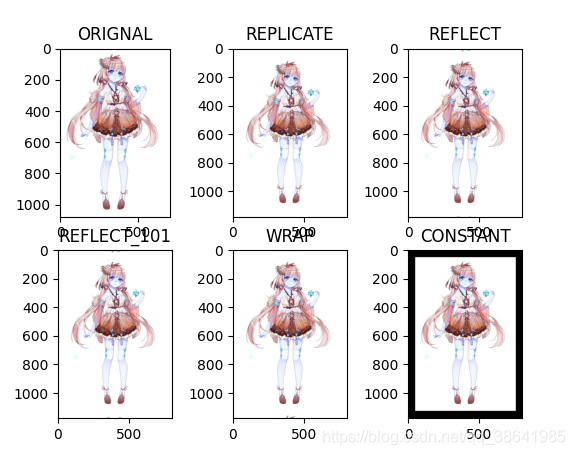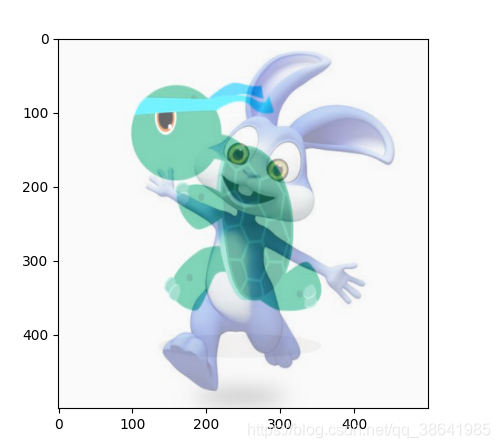溫馨提示×
您好,登錄后才能下訂單哦!
點擊 登錄注冊 即表示同意《億速云用戶服務條款》
您好,登錄后才能下訂單哦!
這篇文章主要介紹Python中opencv操作的示例分析,文中介紹的非常詳細,具有一定的參考價值,感興趣的小伙伴們一定要看完!
直接讀取圖片
def display_img(file="p.jpeg"):
img = cv.imread(file)
print (img.shape)
cv.imshow('image',img)
cv.waitKey(0)
cv.destroyAllWindows()讀取灰度圖片
def display_gray_img(file="p.jpeg"):
img = cv.imread(file,cv.IMREAD_GRAYSCALE)
print (img.shape)
cv.imshow('image',img)
cv.waitKey(0)
cv.destroyAllWindows()
cv.imwrite("gray_img.png",img)讀取視頻
def display_video(file="sj.mp4"):
v = cv.VideoCapture(file)
if v.isOpened():
open,frame = v.read()
else:
open=False
while open:
ret,frame = v.read()
if frame is None:
break
if ret == True:
gray = cv.cvtColor(frame,cv.COLOR_BGR2GRAY)
cv.imshow("result",gray)
if cv.waitKey(10) & 0xFF == 27:
break
v.release()
v.waitKey(0)
v.destroyAllWindows()截取圖片
def get_frame_img(file="p.jpeg"):
img = cv.imread(file)
print (img.shape)
cat = img[0:200,0:200]
cv.imshow('get_frame_img',cat)
cv.waitKey(0)
cv.destroyAllWindows()提取rgb通道
def extrats_rgb_img(file="p.jpeg"):
img = cv.imread(file)
b,g,r = cv.split(img)
print (b.shape,g.shape,r.shape)
new_img = cv.merge((b,g,r))
print (new_img.shape)
copy_img_r = img.copy()
copy_img_r[:,:,0]=0
copy_img_r[:,:,1]=0
cv.imshow("r_img",copy_img_r)
copy_img_g = img.copy()
copy_img_g[:,:,0]=0
copy_img_g[:,:,2]=0
cv.imshow("g_img",copy_img_g)
copy_img_b = img.copy()
copy_img_b[:,:,1]=0
copy_img_b[:,:,2]=0
cv.imshow("b_img",copy_img_b)邊界填充
def border_fill_img(file="p.jpeg"):
border_type = [
cv.BORDER_REPLICATE,#復制法,復制邊緣
cv.BORDER_REFLECT, #反射法,對感興趣的圖像中的像素在兩邊進行復制
cv.BORDER_REFLECT_101,#反射法,以邊緣像素為軸,對稱
cv.BORDER_WRAP,#外包裝法
cv.BORDER_CONSTANT#常量法,常量填充
]
border_title = [
"REPLICATE",
"REFLECT",
"REFLECT_101",
"WRAP",
"CONSTANT"
]
img = cv.imread(file)
top_size,bottom_size,left_size,right_size = (50,50,50,50)
plt.subplot(231)
plt.imshow(img,"gray")#原始圖像
plt.title("ORIGNAL")
for i in range(len(border_type)):
result = cv.copyMakeBorder(img,top_size,bottom_size,left_size,right_size,border_type[i])
plt.subplot(232+i)
plt.imshow(result,"gray")
plt.title(border_title[i])
plt.show()
圖像融合,變換
def img_compose(file1="tu.jpeg",file2="gui.jpeg"): img_1 = cv.imread(file1) img_2 = cv.imread(file2) print (img_1.shape) print (img_2.shape) img_1= cv.resize(img_1,(500,500)) img_2= cv.resize(img_2,(500,500)) print (img_1.shape) print (img_2.shape) res = cv.addWeighted(img_1,0.4,img_2,0.6,0) plt.imshow(res) plt.show() res = cv.resize(img_1,(0,0),fx=3,fy=1) plt.imshow(res) plt.show() res = cv.resize(img_2,(0,0),fx=1,fy=3) plt.imshow(res) plt.show()

二值化處理
def Binarization(filepath):
img = cv2.imread(filepath,0)
limit = 120
ret,thresh=cv2.threshold(img,limit,255,cv2.THRESH_BINARY_INV)
plt.imshow(thresh,'gray')
plt.show()
return thresh
Binarization('t1.jpg')以上是“Python中opencv操作的示例分析”這篇文章的所有內容,感謝各位的閱讀!希望分享的內容對大家有幫助,更多相關知識,歡迎關注億速云行業資訊頻道!
免責聲明:本站發布的內容(圖片、視頻和文字)以原創、轉載和分享為主,文章觀點不代表本網站立場,如果涉及侵權請聯系站長郵箱:is@yisu.com進行舉報,并提供相關證據,一經查實,將立刻刪除涉嫌侵權內容。